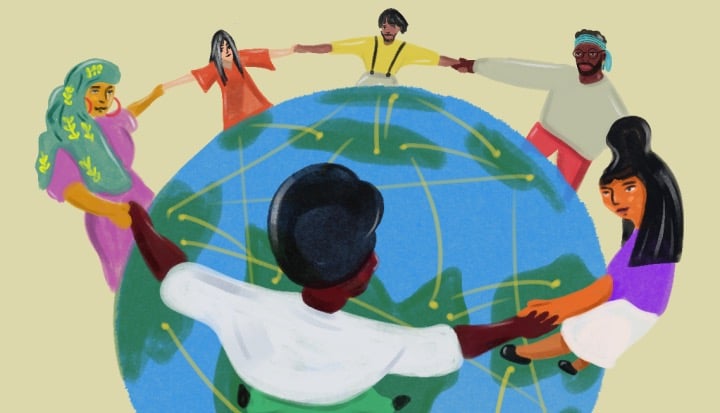Social and environmental inequities exist in every pocket of the world, without exception. They often form across familiar lines, including race, gender, or physical ability, and manifest in familiar ways, including greater or less access to education, employment, technology, security, and a healthy environment. However, the severity, entrenchment, and complexity of these inequities are unique from region to region and community to community. So are their origins, their evolution, and how people define them.
Solving them therefore requires a strong sense of context, including what perpetuates or holds them in place and where the power to change them lies. It demands the knowledge and ingenuity of people who see and experience inequity first hand. In other words, it requires local innovation.
Stanford Social Innovation Review is proud to present its first-ever global series of articles created in collaboration with its six local language partners—SSIR China, SSIR en Español, SSIR Japan, SSIR Korea, SSIR Brazil, and SSIR Arabia. The series, devoted to advancing equity, looks at inequities within the context of seven specific regions or countries, and the ways local innovators are working to balance the scales and foster greater inclusion across a range of issue areas. The stories explore different sectors, and feature ideas or projects in different stages of development, but they all aim to inspire and inform, and taken together, these local stories of innovation help paint a picture of what global equity might look like.
Read excerpts from the first two stories below, and find out more about the series and subscribe to notifications here.
Taking Steps Toward Disability Inclusion in China
By Fan Li & Sally Ren
Despite all the progress, people with disabilities in China still face enormous social and economic challenges, and are often perceived as sources of inconvenience and a burden on families and society. While organizations like the China Disabled Persons’ Federation aim to support the rights and interests of disabled individuals through assistance obtaining welfare subsidies and other services, only the most severely disabled individuals qualify for government financial aid. At the same time, over 20 percent of people with disabilities between the ages of 15-29 grapple with literacy, which significantly undermines their employability. Disability, poverty, and discrimination are part of a cycle where each reinforces the others.
One powerful way to advance inclusion in China is through the business sector. The global surge in recognizing and embracing corporate social responsibility (CSR) and environmental, social, and governance practices has become a driving force for businesses to invest in people with disabilities worldwide. A prime example is The Valuable 500, which aims to raise awareness about the value and capabilities that people with disabilities bring to the workforce and society at large by uniting CEOs from diverse companies, including Fortune 500 and FTSE 100 members. In China, the business consortium B in Action is taking on a similar ambition, seeking to engage companies of various sizes and industries to understand and support disability inclusion, gain insights into the abilities and potential of the disabled community, and foster a deeper understanding of the challenges they face, such as socialization and transportation. Though new, the consortium—which has already attracted 88 companies—offers helpful insights into the ways businesses can effectively advance disability inclusion and the well-being of people with disabilities in China.
Using ‘Purple Glasses’ to Achieve Gender Equity in Mexico
By Luz María Velázquez & Patricia Torres
Gender inequalities have deep and complex roots in economic, social, and political structures around the world. Women everywhere face persistent obstacles that limit their potential and freedom, and undermine their well-being and fundamental rights. This challenge has different nuances in each continent, country, and community.
In Latin America, the culture of machismo—a strong sense of masculine pride—contributes to widespread sexism, including the lack of acknowledgement that women that do the same jobs as men get paid less, and high rates of gender-based violence. For instance, women earn 17 percent less than men in equivalent job roles, and one in three women face gender-based violence. These entrenched social norms deeply impact women’s lives and opportunities. They also inhibit women’s equal representation in areas of power and decision-making, in both political and economic spheres, thus perpetuating gender inequity and violence in the region.
All Women Coo aims to transform these cultural dynamics and remove common barriers to gender equity. One important part of our approach is inviting all people to “put on purple glasses,” an expression for analyzing different situations with a gender perspective. … Our projects include business initiatives and community actions, and showcase women’s ingenuity, resolve, and leadership, contributing significantly to gender equity.










